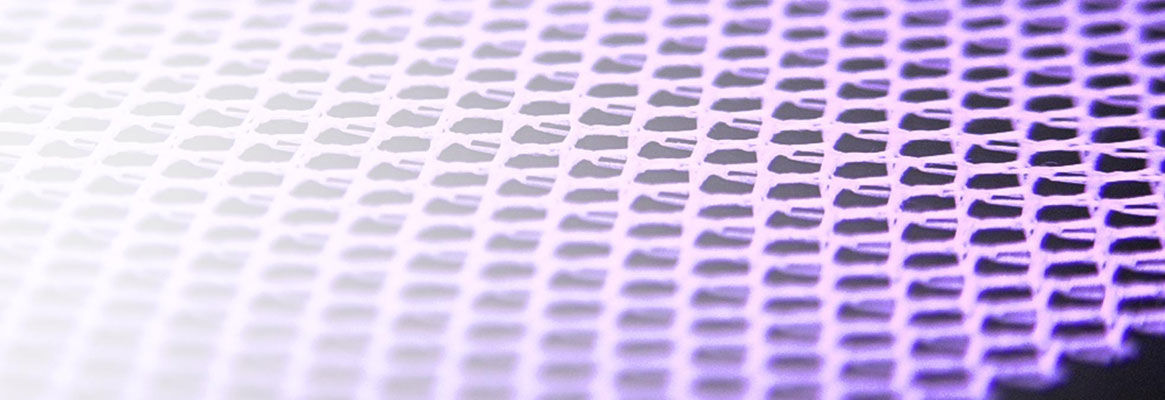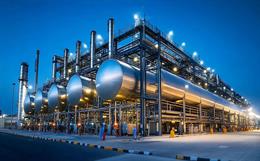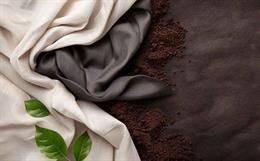| Abstract:- Medical textiles are one of the most rapidly expanding sectors in the technical textile market, according to reports, and hosiery products with medical industry applications are among a long list of textile products being consumed in that market. An important field of application of textile in medicine has been developed such as wound care and preventing chronic wounds. Bandages and wound dressings are most commonly used because they are affordable and reusable. The medical textile should have bio-compatibility, flexibility and strength. |
Introduction: -
Combination of textile technology and medical sciences hasresulted into a new field called medical textiles. New areas of application formedical textiles have been identified with the development of new fibers andmanufacturing technologies for yarns and fabrics. Development in the field oftextiles, either natural or manmade textiles, normally aimed at how theyenhance the comfort to the users. Development of medical textiles can beconsidered as one such development, which is really meant for converting thepainful days of patients into the comfortable days.
Constituent element of Medical Textile products:-
* Nitin Ajmera
M. Tech (Fibers andTextiles Processing Technology)
UICT, N.P. Marg, Matunaga (E), Mumbai-19
Mob No-093238 36731
References:
1.I.V.Walker ,proceedings of Medical Textile Conference,1999,Bolton Institute, U.K. Publishing Co., Cambridge,12-19.
2. G.Fisher .Technical Textile Int., July/Aug 2003, 19.
3. D.G.B.Thomas, Textiles 1975, Feb.7.
4. magic-magnet.com/products/accessary2.htm.
5. www.journalofwoundcare.com
6. H.M.Taylor, Textile, Dec., 1983, 77
7. Dr.V.K.Kothari, Journal of the Textile Association Nov.-Dec.2006.vol.67 p 181-185
8. http;//www.ita.rwth-aachen.de
9. J Luneschloss and W. Albrecht Non-woven Bonded Fabrics, p 404-452
10. N.Arun Man Made Textiles in IndiaSep.2000, Vol.XLIIIp411-415
To read more articles on Textile, Industry, Technical Textile, Dyes & Chemicals, Machinery, Fashion, Apparel, Technology, Retail, Leather, Footwear & Jewellery, Software and General please visit http://articles.fibre2fashion.com
To promote your company, product and services via promotional article, follow
this link: http://www.fibre2fashion.com/services/article-writing-service/content-promotion-services.asp
Characteristics of materials for medical use
The major requirements for biomedical polymers
v Non toxicity
v Nonallergenic response
v The ability to be sterilized
v Mechanical properties
v Strength
v Elasticity
v Durability
v Biocompatibility
v As biomedical materials may be contaminated with bacteria, sterilization is important for biomedical polymers. The sterilization technique can be physical or chemical.
Fibres used for medical and healthcare application
Textiles materials that are used in medical applications include fibres, yarns, fabrics and composites. Depending upon the application, the major requirements of medical textiles are absorbency, tenacity, flexibility, softness and at times biostability or biodegradability.
Fibres used in medical field may vary from natural fibre such as cotton, silk, regenerated wood fluff (absorbent layer), to, manmade fibres like polyester, polyamide, polyethylene, glass etc.
The various applications of different fibre in medical field are shown as follows:
Current Issues
|
Sr No. |
Fibre |
Application in medical field |
|
1 |
Cotton |
Surgical clothing gowns, Beddings, Sheets, Pillow cover, Uniforms, Surgical hosiery |
|
2 |
Viscose |
Caps, Masks, Wipes |
|
3 |
Polyester |
Gowns, Masks, Surgical cover drapes, Blankets, Coverstock |
|
4 |
Polyamide |
Surgical hosiery |
|
5 |
Polypropylene |
Protective clothing |
|
6 |
Polyethylene |
Surgical covers, Drapes |
|
7 |
Glass |
Caps mask |
|
8 |
Elastomeric |
Surgical hosiery |
A number of crucial issues regarding medical products in general and healthcare and hygiene products in particular have been identified and debated amongst clinicians, environmentalist, drug companies etc. for a long time. The issues such as
v Natural against chemical or manufactured fibres
v Disposable against reusable or durable fabrics
v Antibacterial or antimicrobial fibres against finishes or coatings for infection control
v Methods of disposal of clinical waste i.e. landfills against incineration and other forms of medical and clinical waste disposal
There is general move towards an increased use of natural polymers that are biocompatible, biodegradable and nontoxic
Classification of Medical Textiles
These are the textile products for medical applications include materials as fibres, yarns, woven, knitted, nonwoven, PTFE felts and mesh etc.
Depending upon the usage, they are classified as
a. Healthcare and Hygiene products
b. Extracorporeal devices
c. Implantable materials
d. Non-implantable materials
Medical textiles can be classified as follows:
a.Healthcare & hygienic products :
An important area of textile is the healthcare and hygiene sector among other medical applications. The range of products available for healthcare and hygiene is vast, but they are typically used either in the operating theatre or in the hospital wards for hygienic, care and safety of the staff and patients. They could be washable or disposable.
a.1 Operating theatre
This includes surgeons gown, caps and mask, patient drapes and cover cloth of various sizes.
1. Surgical gown: - It is essential that environment of operating theatre is clean and strict control of infection is maintained. A possible source of infection to the patient is the pollutant particle shed by the nursing staff, which carries bacteria. Surgical gowns should act as barrier to prevent release of pollutant particles into air. Traditional surgical gowns are woven cotton goods that not only allow the release of particles from the surgeons but also a source of contamination generating high levels of dust (lint). Disposable non woven surgical gowns have adopted to prevent these sources of contamination to patients and are often composite materials of nonwoven and polyethylene films.
2. Surgical masks:-They should have higher filter capacity, high level of air permeability, lightweight and nonallergic.
Healthcare and hygiene products :
|
Product application |
Fibre type |
Fabric type |
|
Surgical clothing gowns |
Cotton, Polyester, Viscose rayon, Polypropylene |
Nonwoven, Woven |
|
Caps masks |
Viscose rayon, Polyester, Viscose, Glass |
Nonwoven Nonwoven |
|
Surgical covers Drapes cloth |
Polyester, Polyethylene Polyester, Polyethylene |
Nonwoven or Woven Nonwoven or Woven |
|
Beddings, Blankets, Sheets Pillow covers |
Cotton, Polyester Cotton Cotton |
Woven, Knitted Woven Woven |
|
Clothing uniforms Protective clothing |
Cotton, Polyester Polyester, Polypropylene |
Woven Nonwoven |
|
Incontinence Diaper sheet Coverstock Absorbent layer Outer layer |
Polyester, Polypropylene Wood fluff Superabsorbents Polyethylene fibre |
Nonwoven Nonwoven Nonwoven |
|
Cloths/ Wipes |
Viscose rayon |
Nonwoven |
|
Surgical hosiery |
Polyamide, Polyester, Cotton, Elastomeric yarns |
Nonwoven Knitted |
1. Surgical caps: - These are made from nonwoven materials based on cellulose.
2. Surgical drapes and covercloths: - These are used to cover patients or to cover working areas around patients. It should be completely impermeable to bacterial and also absorbent to body perspiration and secretion from wound.
a.2 Hospital ward
This includes beddings, clothing, mattresses covers, incontinence products, clothes and wipes.e.g. In hospital cross infection should be prevented and hence traditional woolen blankets replaced by cotton leno woven blankets.
Incontinence products for patients are available in both diaper and flat sheet forms with later used for bedding. Cloths and wipes are made from tissue paper or nonwoven bonded fabrics, which may be soaked with an antiseptic finish.
Super absorbent fibers for healthcare and hygiene products
They absorbs upto 50 times their mass of water, whereas the conventional wood pulp and cotton linter absorbents absorb approximately 6 times their mass of water. The superabsorbent fibres offer advantage as compared to superabsorbent powders due to their physical form, or dimensions, rather than their chemical structure. Whilst they do absorb fluids to a similar level as powder, they do, however, do it faster. This is due to the small diameter of the fibres (≈ 30μ), which gives a very high surface area for contact with the fluid. Typically fibre will absorb 95% of its ultimate capacity in 15 seconds.
b. Extracorporeal devices
These are extracorporeally mounted devices used to support the function of vital organs, such as kidney, liver, lung, heart pacer etc. The extracorporeal devices are mechanical organs that are used for blood purification and include the artificial kidney (dialyser), the artificial liver, and the mechanical lung. The function and performance of these devices benefit from fibre and textile technology.
b.1 Artificial kidney
v Tiny instrument, about the size of a two-cell flashlight.
v Made with hollow hair sized cellulose fibres or hollow polyester fibres slightly larger than capillary vessels.
v Fabric, which is used to remove waste products from patients blood.
b.2 Artificial liver
Made of hollow viscose to separate and dispose patients plasmas and supply fresh plasma.
b.3 Artificial heart
v An 8-ource plastic pump lined with decom velour to reduce damage to blood and is a
v chambered apparatus about the size of human heart
v Silastic backing makes the fabric impervious to emerging gas that is not desirable in
the blood.
b.4 Mechanical lung
v Made with a hollow polypropylene fibre or a hollow silicone membrane.
v Used to remove carbon dioxide from patients blood and supply fresh oxygen.
C. Implantable materials
Textile fibres, yarns, fabrics, composites and 3-D shaped fabrics from woven, knitted, nonwoven, braided and embroidery play a vital role in the manufacture of various implants, including the replacement of diseased or non-functioning blood vessels and segments of aorta or other big arteries. It is even feasible to produce vascular prosthesis as fine as 2-3mm in diameter.
These materials are used in effecting repair to the body whether it is wound closure (sutures) or replacement surgery (vascular grafts, artificial ligaments etc)
Biocompatibility is of prime importance if textile materials are to be accepted by the body and four key factors will determine how the body reacts to the implants
1. The most important factor is porosity, which determines the rate at which human tissue
will grow and encapsulate the implant.
2. Small circular fibres are better encapsulated with human tissue than larger fibres with
irregular cross sections.
3. The fibre polymer must not release toxic substances, and fibre should be free from
surface contaminants such as lubricants and sizing agents.
4. Biodegradable
Why textile implants?
v Biocompatible materials
v Material combinations
v 2D- and 3D-structures
v Mechanical characteristic adapted to the
v environment
v Adjustable macroscopic structure
v Specific surface design
Polyamide is most reactive material losing its overall strength after only 2 years as a result of biodegradation.
E.g. Sutures, soft tissue implants, orthopaedic implants, cardiovascular implants etc.
Vascular prosthesis
The first artificial vascular graft was produced from polyamide fibre in 1956. Polytetraflouroethylene (PTFE) fibre soon replaced polyamide and then polyester fibre was introduced. The implants are made from variety of synthetic materials. The main fibres include polyester, PTFE. Polypropylene, polyacrylonitrile. However polyester and PTFE are most common vascular prosthesis currently available.
The major requirements of a good vascular graft include
v Non-fraying
v Flexibility
v Durability
v Biocompatibility
v Stability to sterilization
v Resistance to bacteria/viruses
Knitted polyester vascular prosthesis has become the standard vascular graft for replacement of arterial vessels of 6mm and greater. However while this has many features required by a surgeon, such as ease of handling, saturability, and conformability, it has one major disadvantage; it is not blood-tight. The knitted structure, by its nature, is porous, which is what is required for rapid incorporation by tissue in growth from the host. At the time of surgery the surgeon has to percolate the graftusingsome of the patients own blood, which is taken before heparinisation- a time consuming process which can be difficult to carry out satisfactorily. This prevents its use when patients are heparinised such as cardiopulmonary bypass and in emergency aneurismal surgery when percolating is not possible.
The potential for localized delivery of antibiotics from braided surgical sutures
It is an attempt to address the problem of nosocomial infections associated with braided sutures; they have proposed the incorporation of a resorbable antibiotic coating. The sutures coating has been engineered to release its active ingredients locally during the first few days following surgery. Two broad spectrum antibiotics with superior Gram-positive activity, moxifloxacin and Clindamycin were selected and each incorporated at two leves of loading into a reasonable
Epsilon-caprolactum glycolide copolymer which was then coated onto polyester braided sutures. In vitro exposure experiment to phosphate buffered saline (PBS) were undertaken at room temperature for a period of 5 days in order to determine the duration and efficacy of the released antibiotic against a standard strain of Staphylococcus aurous. The results from zone of inhibition tests demonstrated that both antibiotics provided effective prophylytic bacteripostatic properties for periods of upto 2 days.
A suture should be chosen with the following properties of importance: -
v Tensile strength
v Stiffness
v Easy handling properties
v Good knotting security
d.Non-implantable materials
These materials used for external applications on the body and may or may not make contact with skin. They are made from co-polymer of two α amino acids.
This includes wound care, bandages, plasters, pressure garments, orthopaedic belts etc.
d.1 Surgical dressing:-
these are employed as coverings, adsorbent, protective and supports for injured or diseased part. They are different types
v Primary wound dressing
v Absorbent
v Bandages
v Protective
v Adhesive tapes
d.2 Primary wound dressing
v Placed next to the wound surface
v Nonwovens with a binder content of 60% and made of cellulose fabrics are being
v Used.
A dressing should possess the following properties:
v Healing properties, regulated mainly with the substances which are applied to or added to the dressing.
v Causing no mechanical injury of a granulating wound.
v Decreased adherence surface.
v Eliminating a possibility of loose fibers getting caught in the wound.
v Stable and spatial structure
v Easy penetration of wound secretion to the absorbing dressing.
v Not- interrupted process of wound healing - as only the outer gauze compress is changed.
v Painless changing of the dressing.
d.3 Absorbent
Similar to wound pads used in surgery. Manufactured from well bleached, carded and cleaned cotton fabrics. Absorbent lint is cotton of plain weave, warp nap raised on one side, by a process known as linting EPI 36, PPI 32, used as an external absorbent and protective dressing and for the applications of oilments and lotions, as antiseptic adsorbent and protective dressing in first aid treatment.
Surgical and other gauze provide absorbent materials of sufficient tensile strength for surgical dressing. They are made of cotton gauze loosely woven. Now-a days nonwovens are used.
d.4 Bandages
These are narrow cotton or linen, plain weave cloth of low texture, either woven or knitted. There are different types
v Cotton and rubber elastic net bandages- for sprains and strains
v Cotton rubber elastic net bandages- net fabric of lace construction.
v Plaster of Paris bandages- cotton cloth is impregnated with a mixture of calcium sulphate
v Orthopedic cushion bandages.
v Crepe bandage- elastic in nature due to special weave allows it to stretch twice its Length.
Various types of bandages along with their function are mentioned below:
1. Simple Bandage Hold dressings in place.
2. Elasticated Bandage: Impart support and conforming.
3. Light support Bandage: management of sprains or strains.
4. Compression Bandage: Treatment and prevention of deep vein thrombosis, leg ulceration.
5. Orthopedic Bandage: Used under plaster casts, provide padding and prevent discomfort.
6. Gauze: Serves as absorbent material.
7. Lint: Used as protective dressing for use in mild burn applications.
8. Wadding: prevent wound adhesion.
d.5 Protective eye pad
Scientifically shaped to lit over the eye used in outpatient clinic and industrial department.
d.6 Adhesive tapes
It is narrow, plain weave fabric having a coating of adhesive paste. It is used with other pads to conform them on the injury.
Medical textile global scenario:
It is the 5th in the textile market size with respect to other twelve textile application
Recently a survey of medical textiles conducted by the tata economy consultancy services has estimated the market size in terms of value 17093 (Rs Mn) in 2005 and it would be 302018 (Rs Mn)
Market size of medical textile in India in the value terms (Rs Mn) 2005 is 338. It is estimated up to 575 (Rs Mn) 2010
The forecast for the world medical textile consumption in volume and value terms for 2010 is 2380 tonnes and 8238 (Mn USD) respectively
Consumption of different categories of medical textiles:
|
SR |
Medical Textile Product |
Market potential (Rs Mn) |
|
|
|
|
2005 |
2010 |
|
1 |
Sanitary Napkins |
4819 |
8519 |
|
2 |
Incontinence diapers |
605 |
1070 |
|
3 |
Surgical dressing |
5828 |
10302 |
|
4 |
Health care textiles |
1491 |
2635 |
|
5 |
Sutures |
3160 |
5587 |
|
6 |
Medical devices & Implants |
1190 |
2104 |
CONCLUSION
Textiles are more and more developing into interdisciplinary high-tech products with interesting changes in the market. Medical Textile Competence Centers are being established to make the most of knowledge, expertise and existing collaboration with medical researchers, microbiologists, physiologists and textile scientists. Each country has its own regulations and standards for medical textiles. As medical procedures continue to develop, the demand for textile materials is bound to grow.



_Small.jpg)



